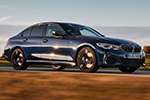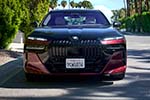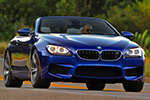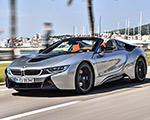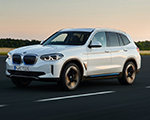BMW sells a lot of cars in the U.S. these days. In fact, at last count, the marque moved 371,346 cars and SUVs last year. It didn’t happen overnight; fifty years ago, BMW of North America’s inaugural year, the brand only sold 19,419 cars. One of the biggest speed bumps on the brand’s journey to selling that many cars came in the late 1980s. Problems began as the U.S. dollar to Deutschmark exchange rate fell, which unfortunately made BMWs extremely pricey in the U.S. (and elsewhere). Adding to the brand’s U.S.-based woes were increasingly stringent emissions standards. Arguably, some of BMW’s greatest enthusiast offerings never made it to our shores because of them. Then, finally, in the final year of the 1980s, BMW had one more reason to lie awake at night: Lexus.
Lexus Challenges BMW

In 1989, Toyota officially launched the Lexus brand. Its goal was to target the BMW/Mercedes-Benz buyer with luxurious vehicles and an eye to customer service; historically, a single customer complaint launched a brand-wide service campaign, which drew a lot of positive attention. In 1991, Lexus made landfall, and it was painfully clear for anyone looking at BMW’s sales numbers. While the brand sold 96,759 cars in 1986, 1991 saw that number fall to a painful 53,343. “What was clear was that our model range simply did not live up to ‘The Ultimate Driving Machine,’” said Vic Doolan, then newly appointed as BMW AG Head of Sales and Marketing. “We knew that to compete we had to excite and please the BMW owner.” The unspoken truth? Lexus was winning market share by virtue of its powerful and smooth V8 engines, excellent comfort and amenities, and perceived reliability thanks to its Toyota ties.
BMW Battles Back
So, BMW began working on something Lexus had demonstrated was a customer need: bigger and badder V8 engines. The 5 and 7 Series became more appealing to U.S. customers, according to BMW, and a new product line in the Z3 roadster further bolstered the lineup. Changes started occurring at the dealership level, too. After all, they had to in order to compete with Lexus’s newly-earned reputation. “Our dealer network was demotivated and unprofitable,” Doolan said. “Poor dealer service was the result.” Doolan implemented complimentary scheduled maintenance and improved technical training to ensure a better service experience.
Big changes also occurred to how people bought BMWs in the mid-1990s. BMW Financial Services was introduced in 1992, which offered better rates and increased flexibility for customers and dealers. Customer loyalty increased, while dealers had enhanced access to pre-owned BMW vehicles. By 1996, BMW managed to post sales of 105,761 for the year. By 1999, Lexus had sold its millionth vehicle after less than a decade of existence. Thus, the battle continued.
As we know today, there was room for both brands — and many other rivals — in the marketplace. By 2000, BMW had brought the E39 M5 and all-new BMW X5 SUV to market. The latter, particularly, was a perfect foil for the blossoming Lexus portfolio, which added the Land Cruiser-based LX 470 SUV in 1998. As a bit of a “where are they now,” Lexus moved 91,609 vehicles in Q3 2025. BMW, on the other hand, sold 96,886. As close as ever, so it would seem. As a big fan of both brands — and owner of both a GX 470 and “clown shoe” M Coupe — it’s amazing to see the dividends that good competition paid.
Source: BMW USA




















